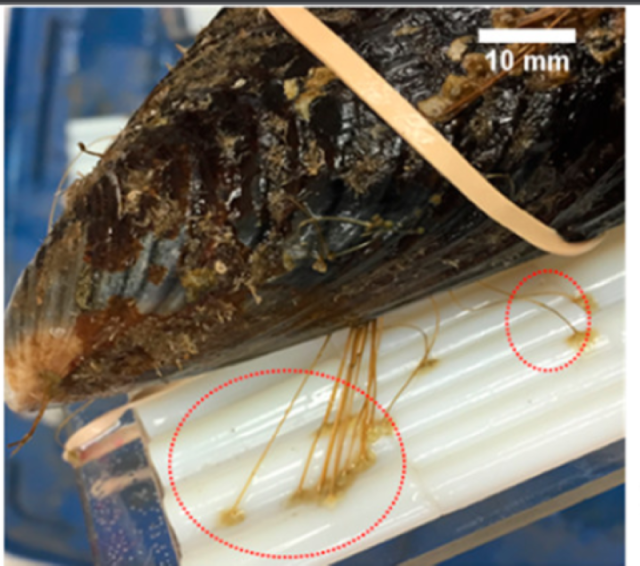
On-Demand Manufacturing Capabilities of Mussels Enable Robust Adhesion to Geometrically Complex Surfaces
Younghoon Kwon, Justin H. Bernstein, Noy Cohen, and Megan T. Valentine. ACS Biomater. Sci. Eng. 7, 11, 5099–5106 (2021).
Abstract
Marine mussels have the remarkable ability to adhere to a variety of natural and artificial surfaces under hostile environmental conditions. Although the molecular composition of mussel adhesives has been well studied, a mechanistic understanding of the physical origins of mussels’ impressive adhesive strength remains elusive. Here, we investigated the role of substrate geometry in the adhesive performance of mussels. Experimentally, we created substrates with differing surface properties using 3D printing and laser drilling and introduced these to mussels, which in turn adhered to the engineered surfaces via plaque-thread byssal structures. Tensile testing with in situ imaging was conducted to quantify the adhesion strength of the mussel plaques, and the microstructures of the mechanically deformed plaques were characterized using scanning electron microscopy. Our results reveal that the geometry of the surfaces has no significant impact on the detachment force and the strain, whereas the change in adhesion area leads to a different adhesion stress. Ultrastructural analysis confirms the expected presence of an open-cell foamy network coated with the cuticle. The observed detachment dynamics and failure mechanisms do vary depending on the substrate properties, suggesting the presence of substrate-dependent nonuniform stress distributions at the interface. Together, these results show mussels’ remarkable ability to adapt to differing physical conditions and demonstrate the importance of the on-demand and in situ manufacturing of the stiff cuticle and relatively compliant adhesive interlayer. The resultant composite structure avoids the formation of prestress during the formation of the adhesive joint, provides conformability to the surface, and helps compensate for local bending interactions to maintain adhesive strength. Our findings suggest forward design strategies to improve adhesive performance on complex surfaces.